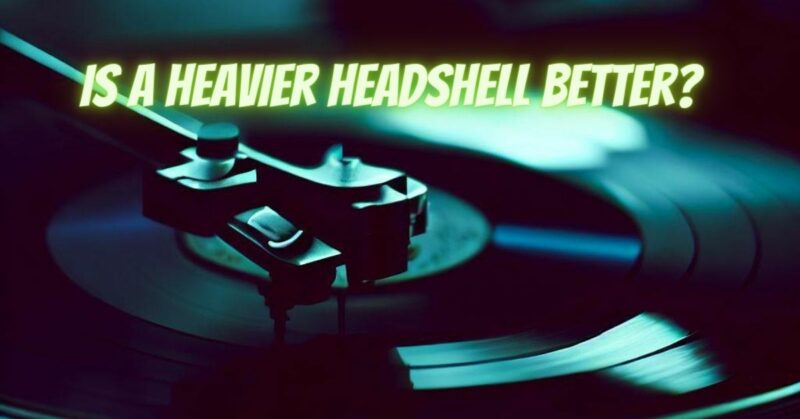The quest for optimal sound quality in vinyl playback involves fine-tuning various components of your turntable setup, and the headshell is no exception. One point of contention in the vinyl enthusiast community is whether a heavier headshell leads to better sound quality. In this article, we’ll explore the role of headshell weight, its potential impact on vinyl playback, and the factors to consider when determining whether a heavier headshell is better for your setup.
The Headshell’s Role in Vinyl Playback
The headshell, a small but significant component of the turntable, holds the cartridge and connects it to the tonearm. It plays a vital role in ensuring proper cartridge alignment and tracking, which are essential for achieving optimal sound quality from your vinyl records.
The Argument for a Heavier Headshell
Proponents of heavier headshells argue that increased mass can offer several potential benefits:
- Damping Resonance: A heavier headshell may exhibit better resistance to vibrations and resonance. This can contribute to cleaner sound reproduction by minimizing unwanted vibrations that could color the audio signal.
- Enhanced Tracking: Some believe that the added mass can help stabilize the tonearm and cartridge assembly, reducing the effects of external vibrations and providing more consistent tracking performance.
- Improved Bass Response: It is suggested that a heavier headshell can enhance bass response, making low-frequency sounds more pronounced and impactful.
The Argument Against a Heavier Headshell
Conversely, opponents of heavier headshells raise counterarguments:
- Increased Mass and Inertia: A significantly heavier headshell can increase the mass and inertia of the tonearm assembly. This may place additional stress on the turntable’s motor and suspension system, potentially affecting tracking accuracy and tonearm movement.
- Compatibility Issues: Some turntables and tonearms may not be designed to accommodate extremely heavy headshells. The extra weight may strain the tonearm bearings or lead to imbalance.
- Diminished Treble Clarity: Critics argue that a heavier headshell can result in a loss of treble clarity and detail, particularly if it affects the tonearm’s ability to move freely and respond to the nuances of the record grooves.
Finding the Right Balance
The suitability of a heavier headshell ultimately depends on various factors, including your turntable’s design, tonearm specifications, and personal preferences. Here are some considerations to help you make an informed choice:
- Turntable Compatibility: Ensure that your turntable and tonearm are designed to accommodate a heavier headshell without compromising performance or balance.
- Cartridge Weight: Consider the weight of your cartridge. A heavier cartridge may not require an equally heavy headshell to achieve optimal balance.
- Listening Preferences: Your preferred sound signature plays a significant role. If you prioritize bass response, a heavier headshell may be worth exploring, but if you value treble clarity, it may not be the best choice.
- Experimentation: It’s advisable to experiment with headshell weight to find the balance that suits your specific setup and listening preferences.
The debate over whether a heavier headshell is better for vinyl playback remains subjective and dependent on numerous variables. While a heavier headshell may offer certain advantages in terms of resonance damping and bass response, it’s crucial to consider the compatibility of your turntable, tonearm, and cartridge, as well as your personal listening preferences. Ultimately, the quest for the perfect headshell weight is an ongoing journey for vinyl enthusiasts, with the goal of achieving the best possible sound quality from their cherished vinyl records.


